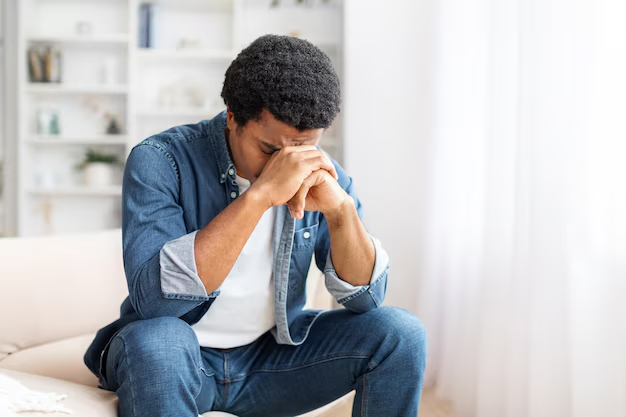Recognizing Anxiety: Signs and Understanding When It's Time to Seek Help
Have you ever found yourself feeling tense during a routine meeting or getting an unexplained rush of nerves without a clear reason? For many, these feelings might simply pass as fleeting discomforts, but for others, they could be signs of something more persistent—anxiety. Understanding if what you're experiencing is anxiety and learning when it's time to seek help is crucial for maintaining your mental well-being.
Understanding Anxiety: The Basics
Anxiety is a natural response to stress and can be beneficial in some situations. For example, it can alert us to dangers and help prepare us to respond to them. However, when anxiety becomes constant or overwhelming, it may interfere with daily activities and lead to significant distress.
What Does Anxiety Feel Like?
Anxiety can manifest in different forms and to varying degrees. Here are some common emotional and physical signs to consider:
Emotional Signs:
- Persistent worry or fear about everyday situations
- Feeling restless or on edge
- Experiencing irritability
Physical Symptoms:
- Increased heart rate
- Rapid breathing or shortness of breath
- Sweating or trembling
- Fatigue
- Trouble sleeping
If you notice a combination of these symptoms frequently, it could indicate anxiety.
Differentiating Between Normal Anxiety and Anxiety Disorders
It's important to recognize the difference between normal anxiety and an anxiety disorder. Normal anxiety typically arises in response to specific stressors like an upcoming exam or public speaking. It usually resolves on its own once the stressor is eliminated.
In contrast, an anxiety disorder is characterized by persistent and excessive anxiety, even in the absence of stressors. This means experiencing high levels of anxiety in everyday situations, significantly affecting one’s quality of life.
Common Types of Anxiety Disorders
Generalized Anxiety Disorder (GAD):
- Persistent and excessive worry about various aspects of life, such as work, health, or routine events.
Panic Disorder:
- Recurrent episodes of sudden, intense fear accompanied by physical symptoms like chest pain and palpitations.
Social Anxiety Disorder:
- Intense fear of social situations, driven by worry about judgment or embarrassment.
Specific Phobias:
- Extreme fear of specific objects or situations, such as flying or heights.
Obsessive-Compulsive Disorder (OCD):
- Obsessions (intrusive thoughts) and compulsions (repetitive behaviors) aimed at reducing anxiety.
What Causes Anxiety?
The exact cause of anxiety is not fully understood, but several factors may contribute:
- Genetics: A family history of anxiety disorders.
- Brain Chemistry: Imbalances in neurotransmitters may play a role.
- Environmental Stress: Traumatic events or ongoing stress.
- Medical Factors: Certain health issues can exacerbate anxiety, such as heart disease or thyroid problems.
Recognizing Triggers and Coping Strategies
Identifying what triggers your anxiety can help in managing it. Common triggers include stress from work or school, financial issues, or relationship problems.
Practical Coping Mechanisms
- Mindfulness and Meditation: These practices can calm the mind and reduce anxiety.
- Breathing Exercises: Deep, slow breathing can help manage immediate symptoms.
- Regular Exercise: Physical activity releases endorphins, which naturally uplift mood.
- Adequate Sleep and Nutrition: Maintaining a healthy lifestyle supports mental health.
When to Seek Professional Help
Recognizing when to seek professional help is crucial. If anxiety interferes with your daily life or causes excessive distress, it’s time to consult a mental health professional. Here’s what you should consider:
- Persistent Symptoms: If symptoms last longer than six months, it may be time to seek help.
- Impact on Daily Life: Difficulty concentrating, completing tasks, or maintaining relationships could be signs.
- Physical Health Concerns: Anxiety can sometimes mask underlying physical health issues that require attention.
Ways to Get Help
If you decide to seek help, there are multiple options available:
- Therapy: Cognitive Behavioral Therapy (CBT) is a common and effective treatment.
- Medication: In some cases, medication may be prescribed to help manage symptoms.
- Support Groups: Connecting with others who have similar experiences can provide comfort and understanding.
Breaking the Stigma
Unfortunately, many people hesitate to seek help due to the stigma surrounding mental health. It's important to remember that seeking help is a sign of strength, not weakness.
Sharing experiences and participating in open conversations about anxiety can contribute to breaking this stigma and encourage more individuals to seek help when needed.
In conclusion, recognizing anxiety starts with understanding its signs and knowing when these signs might suggest something beyond everyday stress. If you resonate with these symptoms, remember that you're not alone, and help is available.
🔍 Quick Summary of Anxiety Recognition & Steps to Take
- Identify Symptoms: Emotional and physical signs of anxiety can include persistent worry, restlessness, increased heart rate, and fatigue.
- Understand Triggers: Recognize what triggers your anxiety to manage it effectively.
- Coping Strategies: Use mindfulness, exercise, and breathing exercises to alleviate symptoms. 🧘♂️
- Seek Help if Needed: Professional assistance is valuable if anxiety disrupts your daily life. 🆘
- Break the Stigma: Talking openly about mental health can help break the stigma and provide support. 💬
Taking these steps can empower you to manage anxiety more effectively and improve your overall quality of life. 🌟
